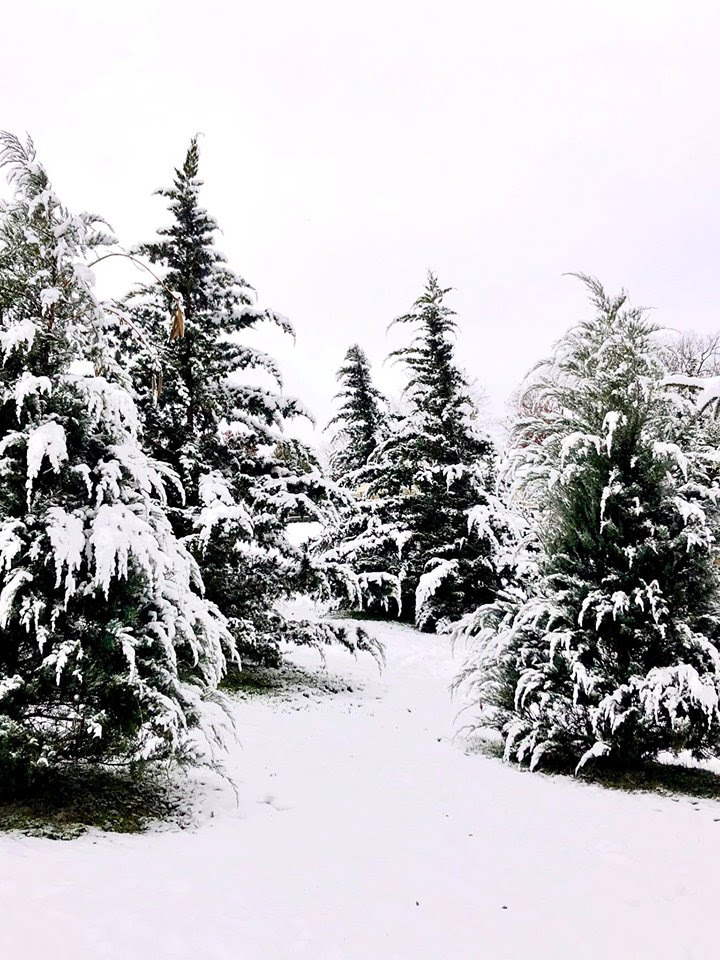Homegrown holiday greenery
Published 11:57 am Tuesday, December 7, 2021
|
Getting your Trinity Audio player ready...
|
Yards to Paradise
Traditions of decorating with greenery about the time of the winter solstice go back to ancient Mesopotamia and evidence of such is abundant in Assyrian and Egyptian history. Decorating homes with evergreen boughs and trees was prohibited in the first American colonies in New England. Gradually, Irish plantation owners in the South and German settlers in the North began to popularize the gathering of seasonal greenery and decorating their homes around the 1840’s. In 1848, British Queen Victoria first used a tree at Windsor Castle. Public tree decorating in America didn’t really catch on until the Great Depression. Today, it seems to begin by the time the leaves turn colors in the fall and last until early January.
With that introduction to the topic; I want to bring to the attention of the reader that you can grow a lot of your own greenery for decorating, and you can collect from the wild (or your yard if you have a lush green one) and save green (your money) and also have the freshest and most unique when it comes to decorating for the holidays.
Decorating with greenery is more prevalent today than ever. And fresh greenery seems much preferred. Greenery such as ivy, cedars, firs, pines and hollies all add a fresh look and natural scents to our homes.
Spruce trees, hemlocks, rhododendrons, boxwoods, evergreen viburnum and laurels don’t hold up well in indoor heated situations, but these and many other items can be turned into outdoor decorations.
Home grown greenery is cheaper, fresher, more environmentally friendly, and you can customize it rather than be like everyone else. Finding greenery can begin with your own landscape. And from there, expand to the neighborhood. (Just remember to select carefully, and get permission if you’re going to harvest from private property that doesn’t belong to you.)
What can you find? Well, let’s see—what do you have growing in the yard? Hollies? A pine tree? Junipers? Arborvitae? Laurels? False cypress such as gold thread and saybrook gold? Maybe ligustrum or rhododendron? How about some large green magnolia leaves, or some trailing ivy or winter creeper? Nandina, too.
Since yard plants are part of your landscape, consider harvesting some greenery as “pruning” of your bushes! You want to take off evenly or remove limbs that won’t make it look odd, while at the same time collecting a whole box or basket of green clippings, from which you can make wreaths, sprays or garland, or a table piece.
Adding seed heads, fruits, nuts, grass plumes, pine cones, magnolia pods, rose hips and the like can enable the personalized touches not obtainable from store-bought decorations.
Keep your trimmings out of the sun as you collect. Soak in water for awhile if they appear dried out. Same for a Christmas tree, you can cut off an inch or two from the trunk and put it in water for a few hours to extend it’s life.
A precaution or two as you harvest for your home decorating. Holly berries may be harmful if eaten. Mistletoe berries are definitely deadly poisonous. Juniper berries can be harmful and yew is certainly poisonous. Bittersweet is poisonous. Laurel and ligustrum berries are poisonous. This isn’t a complete list—so do your homework if children or pets might get at your decorations and might put them in their mouths.
Even though you collect your own greenery, or maybe go to a local farmer or Christmas tree grower, after a few weeks even the freshest and most long lasting greenery won’t stay fresh forever. So, delay collecting and decorating, or be prepared to throw away items that are going bad and replace them with fresh new ones if you wish to keep your decorations on display for more than two or three weeks.
Another word of caution would be that an open flame such as a candle burning, or possibly a short in wiring of electric lights, could turn pretty decorations into a fire. Evergreen boughs that have been dead for long will burn fast and hot if they should ever get on fire. Be especially vigilant with the use of candles or open flames around old and dried greenery.
Growing or making your own decorations is definitely a smart idea if the budget is tight and you can find a bit of time. All the more so, if you have artistic flair for decorating. But, you don’t have to be broke from buying gifts or whatever, you may find it is actually emotionally satisfying to create fun and lovely wreaths, sprays, garlands, etc. Don’t forget to harvest your own tree from the forest or from the Christmas tree farm.
If you’ve read this far, you probably are going to take up the idea of creating some decorations yourself. And if you don’t have any trees or shrubbery in your yard that will work—I’m guessing that would make you a red maple and Bradford pear person like a huge number of other people—perhaps you want to figure out what to plant in your yard so you have the option of doing your own next time.
Spruce trees and holly bushes are easy to grow, at least in a temperate climate. From there, you have junipers, arborvitae, cedars, firs, pines, hemlocks, cryptomeria, false cypress and more. There are broadleaf trees such as magnolia grandiflora, tinus or Prague viburnum, pittosporum, distylum, euonymus, ligustrum, English laurel, mountain laurel, Japanese laurel, and there are citrus trees.
Think of how much nicer your yard might look if a few of it’s trees or bushes didn’t change colors and drop leaves in the fall and winter. This might be the notion that incentivizes you to tear out a landscape that wasn’t working very well and redo it. Or just that you will plant a big spruce tree in the front yard this fall or next spring, maybe you’ll plant some arborvitae or euonymous to screen some utilities or a view of the neighbors you don’t really enjoy, make-overs of the yard come in small adjustments for some and major transformations for others. If planting some evergreen trees and shrubs or vines would make your place look better, then why hesitate. You’ll also be able to use some “prunings” for seasonal decorating with your own home grown greenery.
The author is a landscaper. Email: rockcastles@gmail.com Website: rockcastles.net






